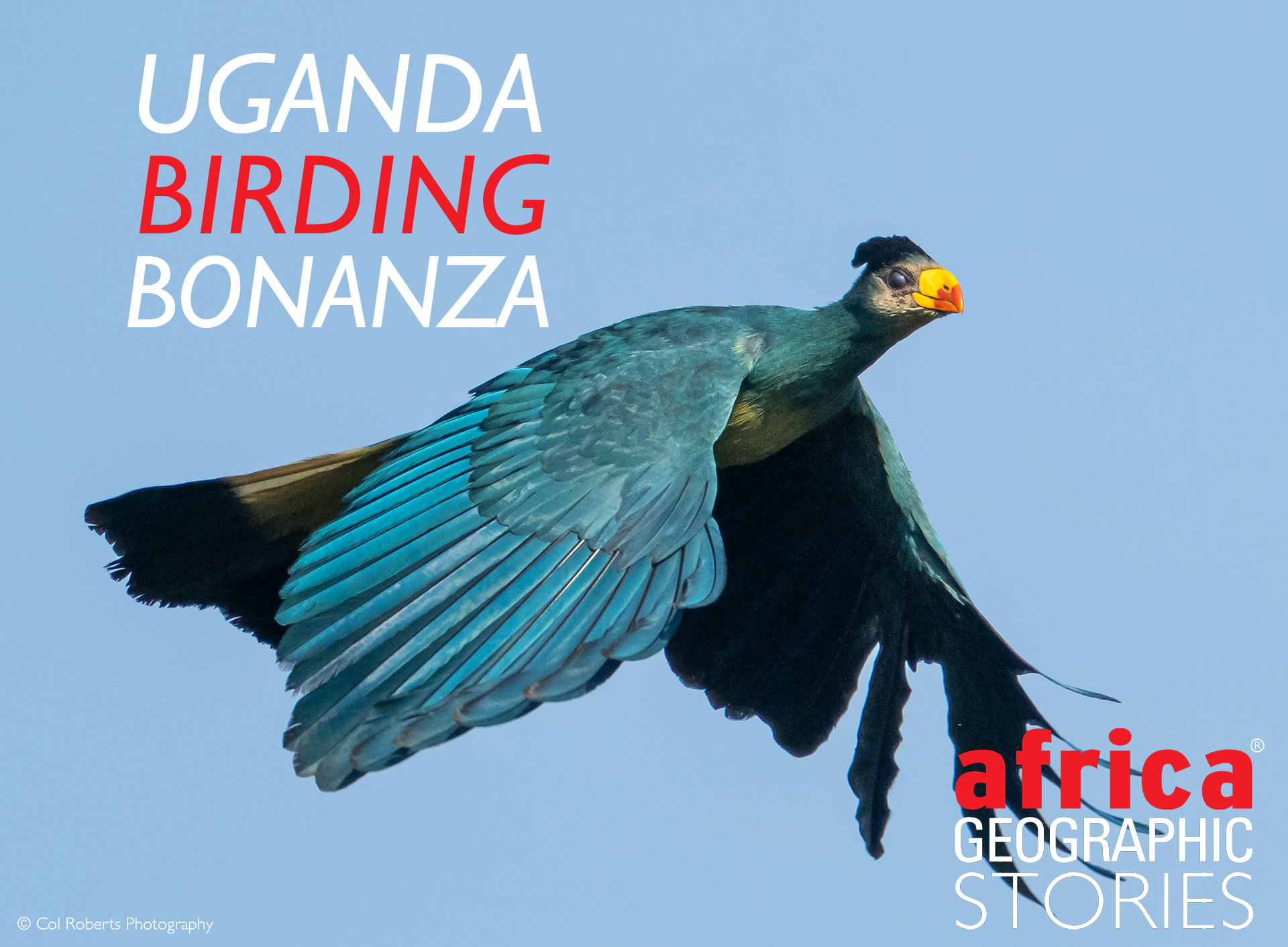
A feast for birdwatchers

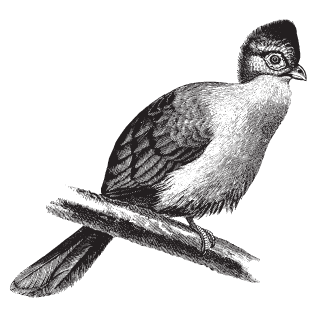
Few countries in Africa offer birding opportunities quite as magical as the feast served up by Uganda. A birding safari to Uganda provides the chance to rack up fantastic sightings, with more than 1,065 bird species recorded in the country. Uganda’s varied habitats cover high and low altitude ranges, from afro-montane rain forests and wooded landscapes to grassland savannahs, marshes, papyrus swamps, fallow agricultural lands, lakes and arid areas. And the result is an astronomical diversity of birds to see.
When birding and wildlife photographer Col Roberts challenged teamAG’s resident birding pro, Christian Boix, to weave together a month-long birding safari covering the majority of the country’s habitats, AG’s safari experts were thrilled to oblige.
“To make things more interesting, I specified that I was mainly interested in seedeaters – waxbills, weavers, whydahs and parrots,” says Col. “But, how could I refuse other beauties such as turacos, barbets, papyrus gonoleks and the prehistoric-looking shoebill? I also specified I had a limited budget and was happy to stay in mid-to-budget-range accommodation.”
With that, teamAG got to work, and Col was soon off on a birding odyssey across the country, with Lake Victoria (and Mabamba Swamp), Pian Upe Wildlife Reserve, Kidepo Valley National Park, Masindi, Kibale Forest National Park, Queen Elizabeth National Park, Mabira Forest Reserve, Bwindi Impenetrable Forest and Lake Mburo National Park lined up on his itinerary.
Enjoy a few of the highlights Col experienced on his trip below. Or to find the ideal African birding safari for you, click here.
Cover image: Great blue turaco in Kibale Forest National Park

Bwindi Impenetrable Forest
As home to many endemic and rare bird species, Bwindi Impenetrable National Park is the soul of Uganda birding. About 350 species, including 24 Albertine Rift endemics, can be found within Bwindi Impenetrable Forest.
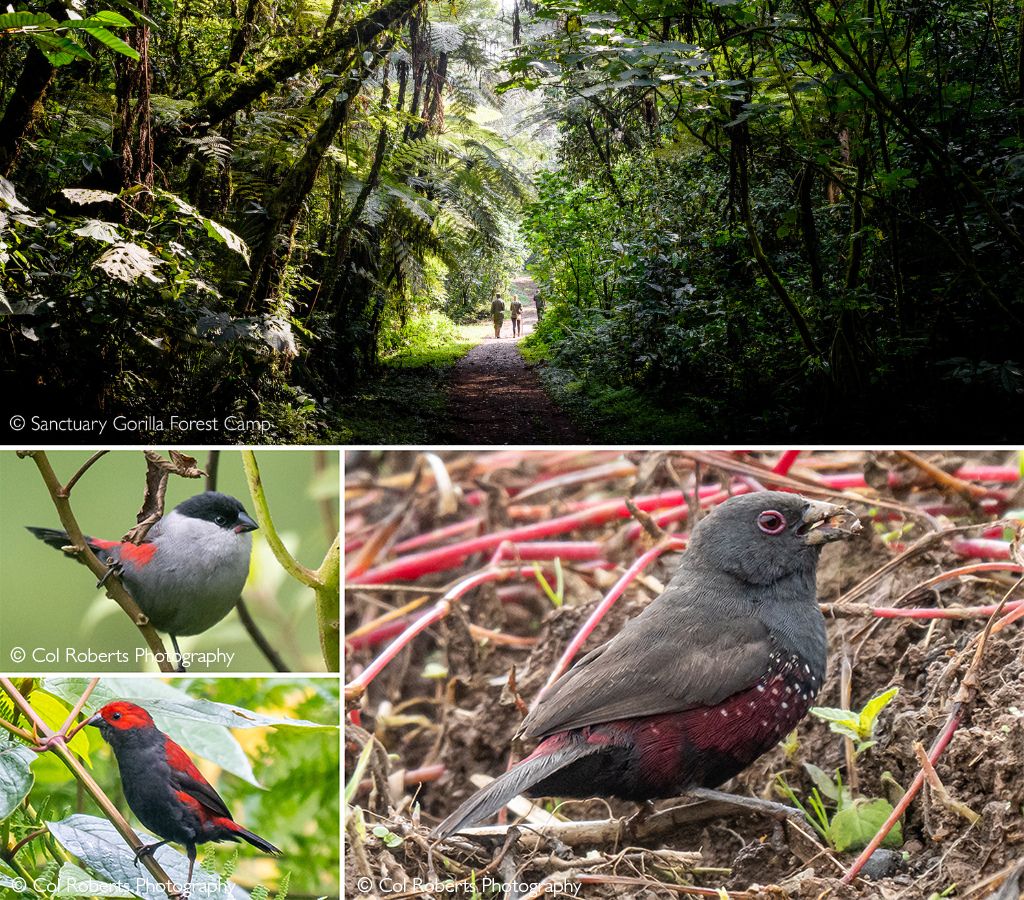
Mabira Forest Reserve
Mabira Forest Reserve is the largest natural forest in the central part of Uganda, and hosts about 315 bird species. While conditions for photography can be tricky (as with all forest birding), a trip to the forest guarantees excellent sightings.
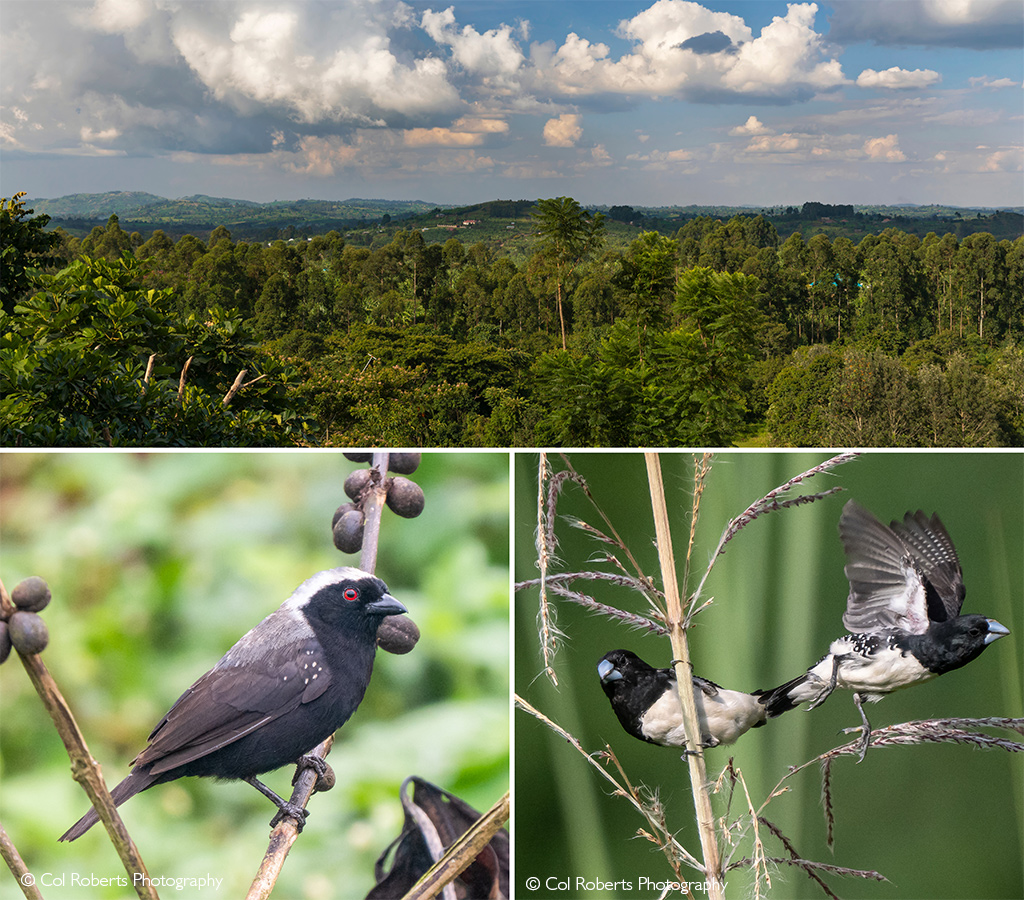

Pian Upe Wildlife Reserve
Pian Upe Wildlife Reserve is the largest wildlife reserve in Uganda, hosting more than 242 bird species, including savannah birds, migratory birds and endemics.

Kidepo Valley National Park
The remote Kidepo Valley National Park stretches across the Karamoja region of northeast Uganda and is home to over 450 species of birds. Vast tracts of savannah are dotted with hills and rock clusters, traversed by the forest-flanked Lorupei River.
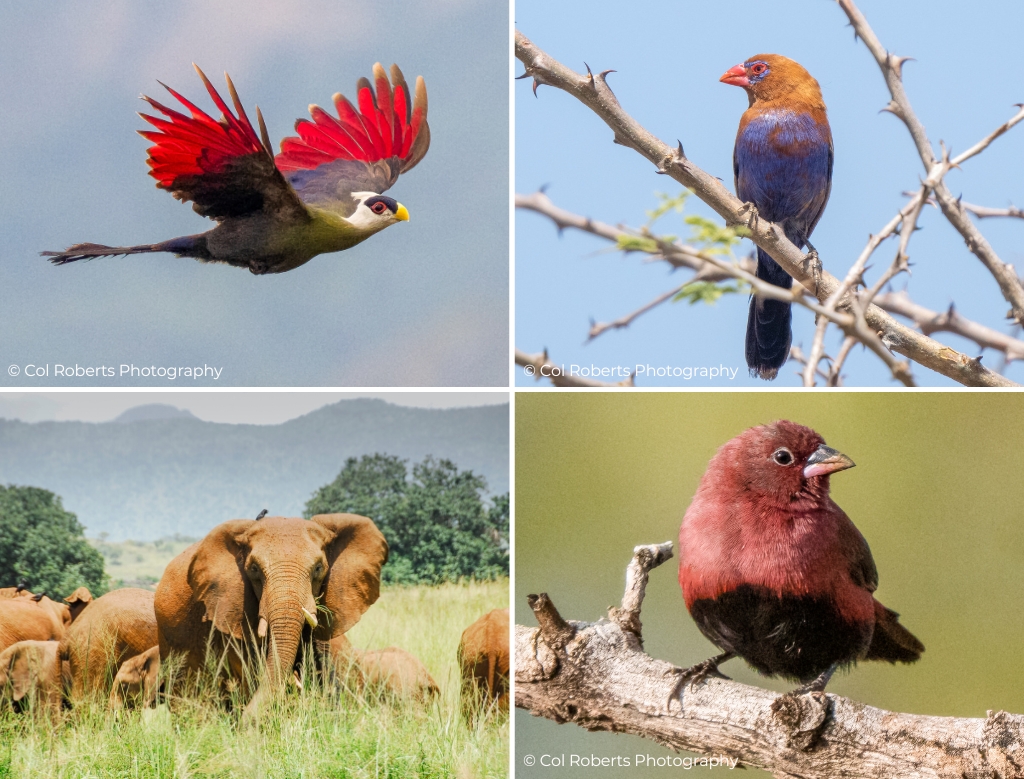
Lake Victoria (and Mabamba Swamp)
Lake Victoria is the largest freshwater body in Africa and is home to about 260 bird species. From Entebbe and Lake Victoria, travellers can easily access Mabamba Swamp and its papyrus-lined marshes – for excellent sightings of shoebills.


Kibale National Park
Six Albertine Rift endemics occur in Kibale Forest, and about 375 bird species can be seen across the area’s wetlands, tropical forests, woodlands and savannah.

Queen Elizabeth National Park
Over 600 bird species have been recorded in Queen Elizabeth National Park across various habitats – from savannah to dense forest, lakes and wetlands. Col visited the south of Queen Elizabeth National Park.
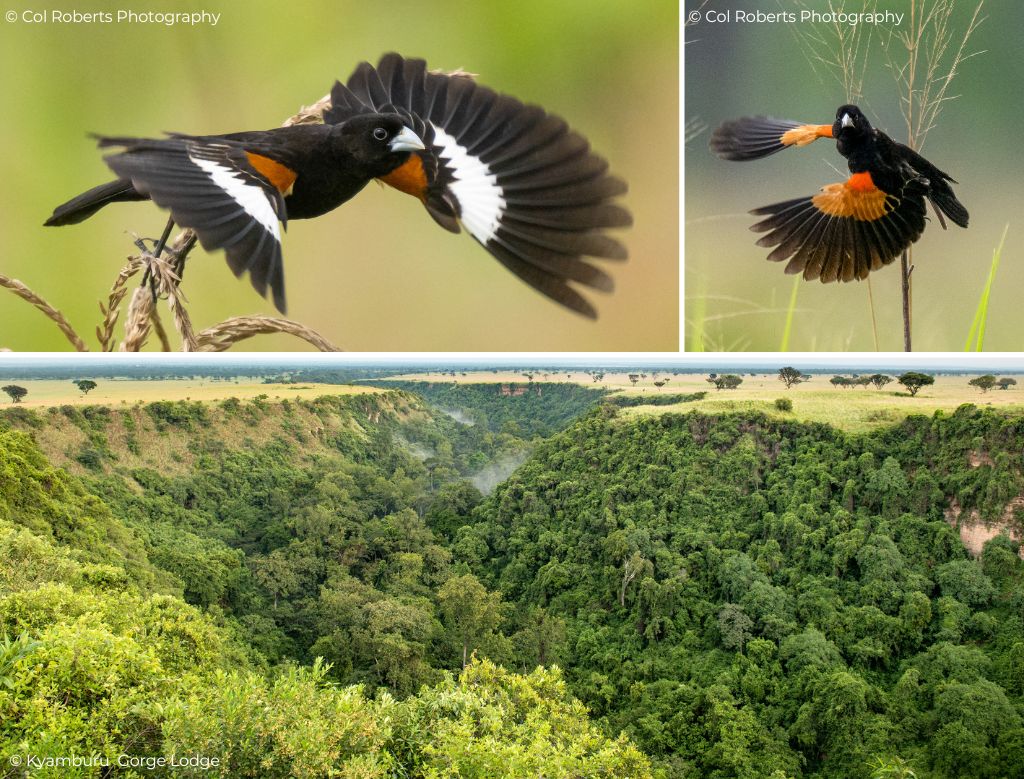
Lake Mburo National Park
Lake Mburo National Park offers epic birding at its lake swamps, Warukiri and Rwonyo. Other habitats include dry hillsides, rocky outcrops and dense savannah. A total of 320 bird species occur here, including papyrus gonolek and shoebills.
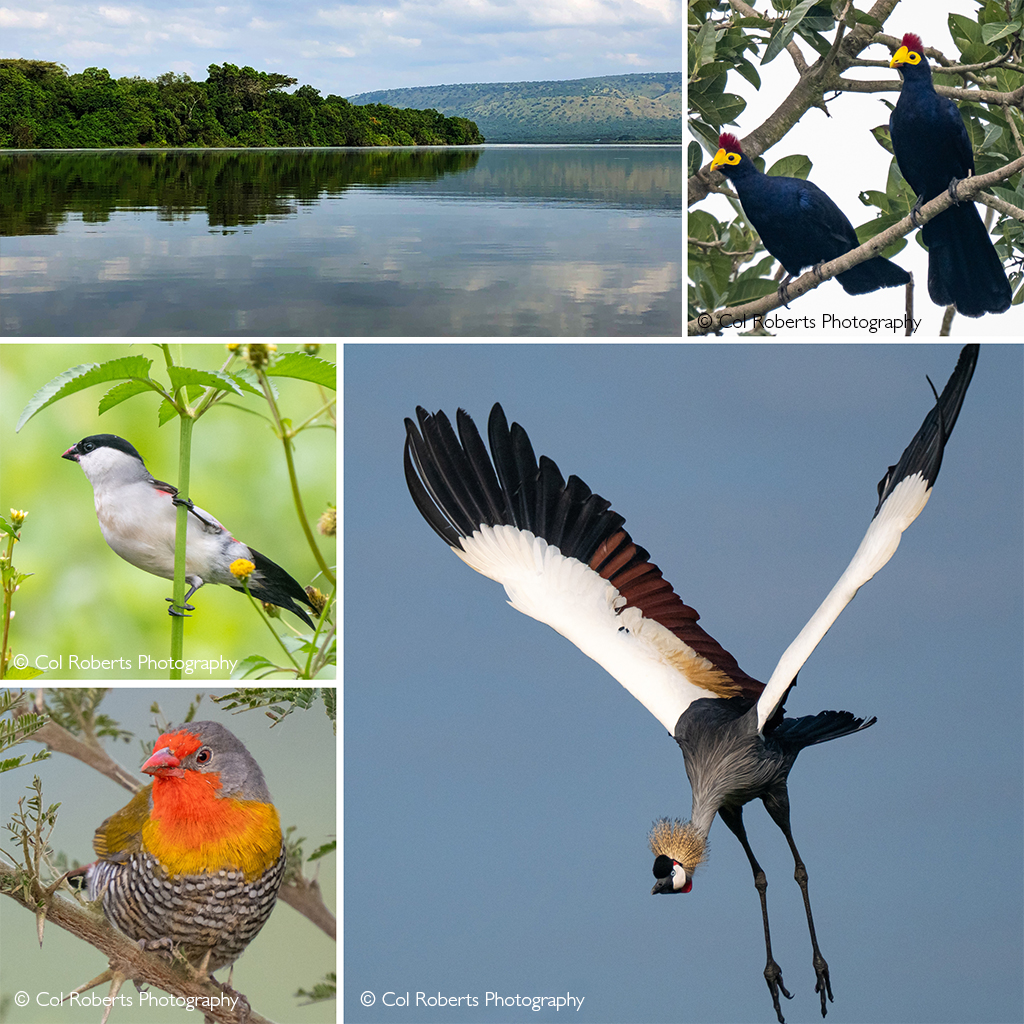
Follow Col Roberts at @colrobertsphotography on Instagram and Facebook. His works have been published in the books Finches of Australia and Gouldian – the World’s Most Beautiful Finch.
To comment on this story: Login (or sign up) to our app here - it's a troll-free safe place 🙂.![]()






